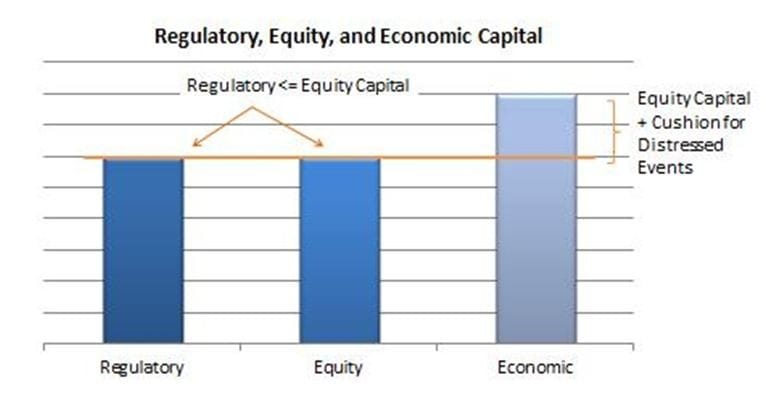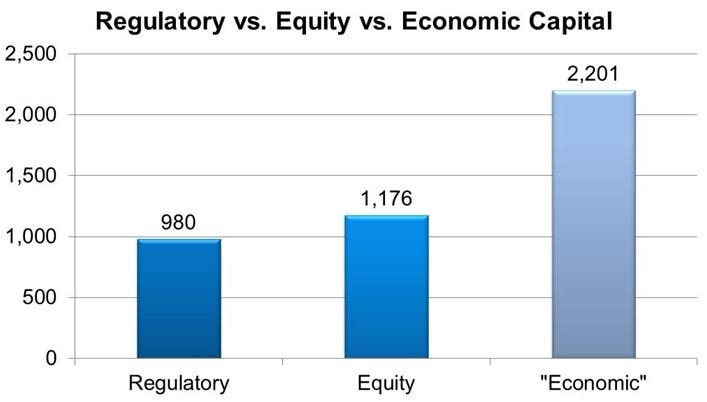Risk capital and lessons from the Titanic
By Tara Skinner, Systems Engineer Manager, SAS
It has been nearly a decade since the term “economic capital” (also called risk capital) has been in use, and still, when discussions turn toward explaining what it is to the non-academic, eyes tend to glaze over. Further, the non-banker typically believes that risk capital is something only banks need to calculate. The discussion does not have to turn to debates on the merits of Value-at-Risk, Monte Carlo simulations, and unexpected loss. Rather, there is a real-world definition that can be used for all firms, not just banks, and it is illustrated by a rather simple, though tragic, real-life event.
First, let’s define economic, or risk, capital. Prakash Shimpi of Swiss Re coined the term economic capital in 2002.1 Starting with the amount of operational or cash capital that a firm needs to operate its business (equity capital), risk capital is an estimate of the worst possible decline in the firm’s amount of capital at a specified confidence level, within a chosen time horizon. Specifically, it is the amount of additional equity capital required to limit the probability of financial distress to a level considered acceptable by senior management. The adjective economic is used for describing risk capital because it measures potential changes in the economic value of assets and liabilities, as opposed to changes in value that are determined by accounting rules.2 For banks where regulatory capital is required, management must keep its equity capital at a level equal to or more than the amount of regulatory capital. However, banks should aim to hold equity capital of an amount equal at least to economic capital.

Illustration 1: Regulatory Equity and Economic Capital
So what does the tale of the Titanic teach us about economic capital? 1912 marked the maiden voyage of the Titanic, a state-of-the-art passenger liner, designed with all of the “best practices” available at the time. Though considered unsinkable (that is, the risk probability equals zero), the regulatory body providing oversight to ships 100 years ago specified that the Titanic have onboard lifeboat capacity for 980 people (regulatory capital). Top management of the White Star Line (Titanic’s builders), however, thought it best to have additional safety measures, ensuring that there was a 1,176-person lifeboat capacity (equity capital). History, of course, tells us that there were 2,201 passengers onboard The Unsinkable. Had the senior management of White Star Line considered the worst possible scenario for a single trip, it would have had lifeboat capacity for everyone aboard (economic capital).

Illustration 2: Regulatory vs Equity vs Economic Capital
In no way do I consider the loss of life equivalent to financial loss or distress, but risk capital management of the Titanic gives us a clear picture of risk capital management for organizations, both banks and non-banks. Economic capital is that something extra that senior management needs for staying financially afloat in tough economic times.
Here's a great white paper thatdescribes a bank's typical budgeting and planning process and explores how the risk and finance functions can be integrated into this process. Download Integrating risk and finance in the bank budgeting process. Also take a look at this page for a brief overview of what SAS can do to help banks with capital management.
If your firm is not strictly a banking firm, shoot me an email and I'll find something more suited to your needs.
Nemo enim ipsam voluptatem quia voluptas sit aspernatur aut odit aut fugit, sed quia consequuntur magni dolores eos qui ratione voluptatem sequi nesciunt. Neque porro quisquam est, qui dolorem ipsum quia dolor sit amet, consectetur,

Read More
Here's a great white paper that describes a bank's typical budgeting and planning process and explores how the risk and finance functions can be integrated into this process. Download Integrating risk and finance in the bank budgeting process.
